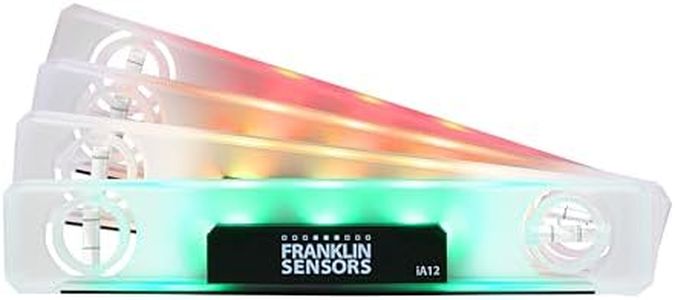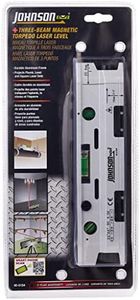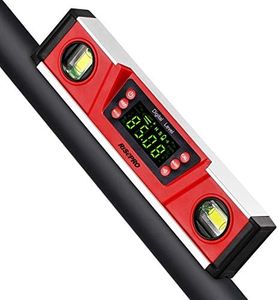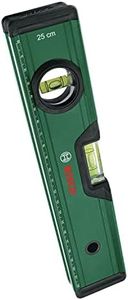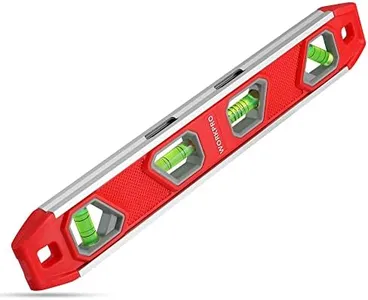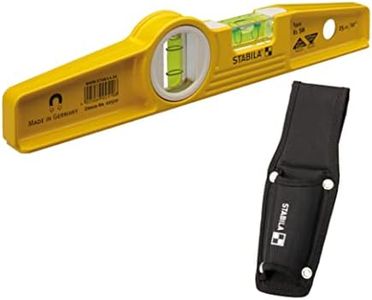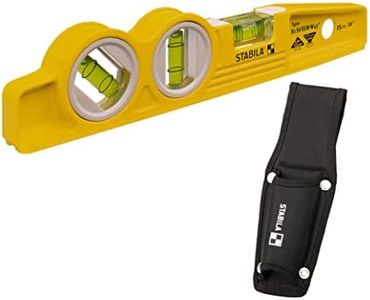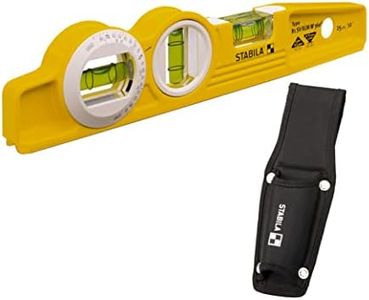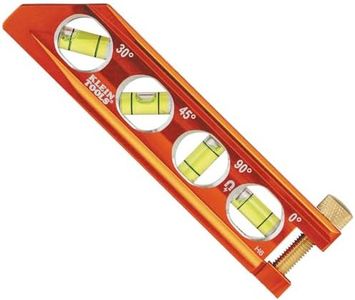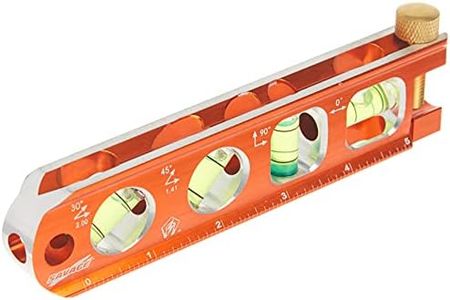We Use CookiesWe use cookies to enhance the security, performance,
functionality and for analytical and promotional activities. By continuing to browse this site you
are agreeing to our privacy policy
10 Best Torpedo Levels
From leading brands and best sellers available on the web.Buying Guide for the Best Torpedo Levels
When choosing a torpedo level, it's important to understand that this is a handy tool for checking the flatness or straightness of surfaces, whether you’re hanging a picture frame, installing shelves, or doing a plumbing job. The best torpedo level for you depends on how accurately you need to measure, where you’ll use it, and how often you’ll need it. Focusing on a few key features will help you select the right one for your work style and needs.LengthThe length of a torpedo level determines how easily it fits into compact spaces and how accurate its readings can be over a distance. Torpedo levels are usually around 6 to 12 inches long, making them great for tight spots where longer levels can’t fit. Shorter levels (6–9 inches) are easiest to carry around and store, making them perfect for small projects or use in tool belts. Longer torpedo levels (10–12 inches) offer a bit more accuracy when you’re measuring longer surfaces. Think about the kinds of jobs you’ll do most: if it’s mostly around-the-house quick fixes, a shorter one is likely enough, but for anything bigger, go slightly longer.
Number and Type of VialsThe vials in a torpedo level are the tubes you look at to determine if a surface is straight (level), vertical (plumb), or at a 45-degree angle. Most torpedo levels have two or three vials. Two-vial models measure level and plumb, while a third vial lets you check 45-degree angles, which is great for tasks like installing stair rails or trim. Some vials are illuminated or have high-visibility fluid for easier reading in low light. Decide what kinds of measurements you need most; more vials can be useful if you want extra flexibility, but for very simple jobs, two is usually enough.
Material and DurabilityThe material of your torpedo level affects durability, weight, and sometimes accuracy. Levels commonly come in plastic, aluminum, or other metal bodies. Plastic is lightweight and inexpensive, but less tough�—if you often drop your tools or work in tough environments, aluminum or metal is a better pick because it’s more durable. If you’re a homeowner or light DIY user, plastic may be just fine, but professional use or rough sites call for sturdier materials.
Magnetic BaseSome torpedo levels come with a magnetic base, which is a strip of magnets on the bottom. This feature is very handy if you work with metal surfaces (such as pipes, beams, or studs) because it lets the level stick to the surface so you can work hands-free. If you do a lot of metalwork or installations, a magnetic base can save time and frustration. If most of your jobs are on wood or drywall, this may not be as important.
AccuracyAccuracy on a torpedo level refers to how closely it can measure when something is truly level or plumb. Manufacturers often rate accuracy as a fraction of a degree (like 0.0005 inches per inch) or in millimeters/meters. High-accuracy levels are important for precision work, such as carpentry, tile work, or mechanics, where even a small deviation matters. For simple household tasks, ultra-high accuracy isn’t usually critical; standard accuracy will do the job. If you demand perfection, look for high accuracy specs and quality assurance.
Visibility and ReadabilityVisibility refers to how easy it is to see the vials in different lighting conditions. Some torpedo levels have glowing or backlit vials, large bubble windows, or colored backgrounds for clarity. This feature can make a huge difference in dimly lit workspaces, basements, or under sinks. If you often work in bright or low-light conditions, consider a level designed for better readability.

